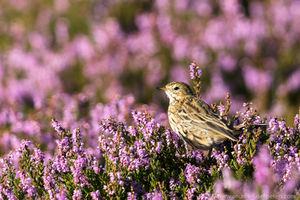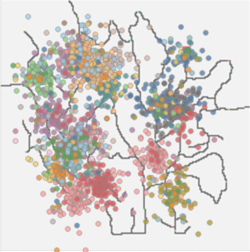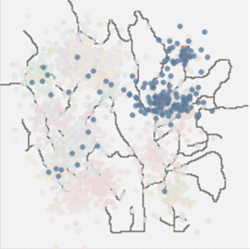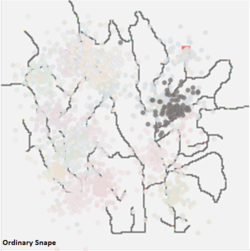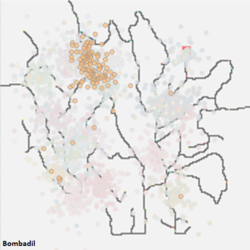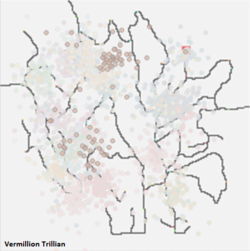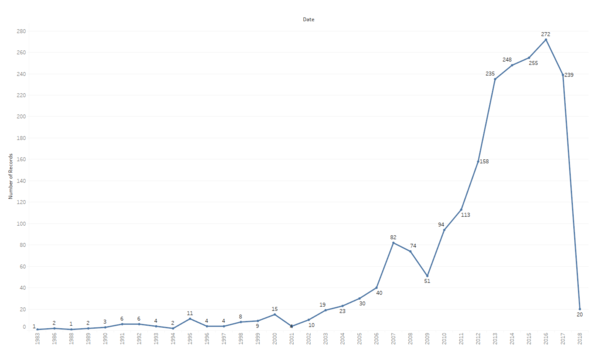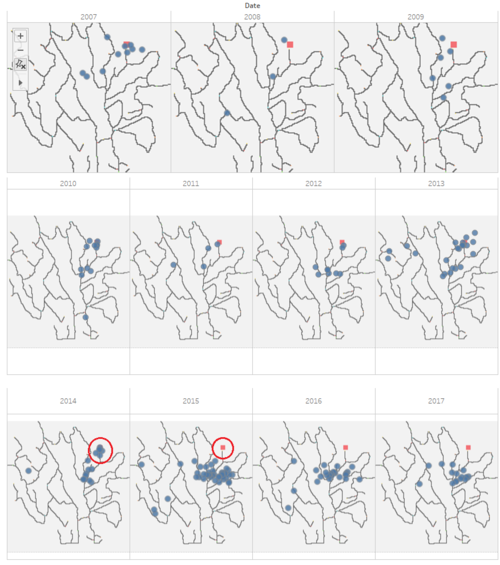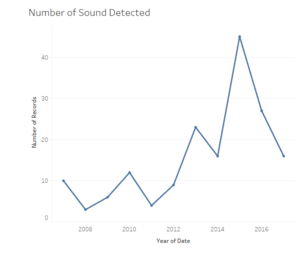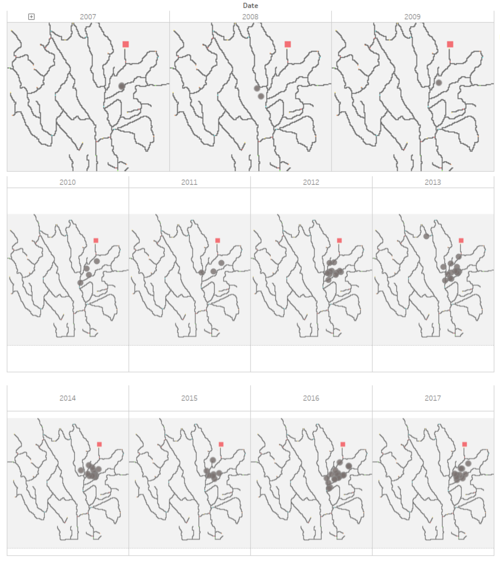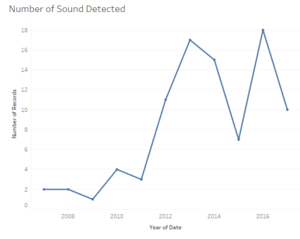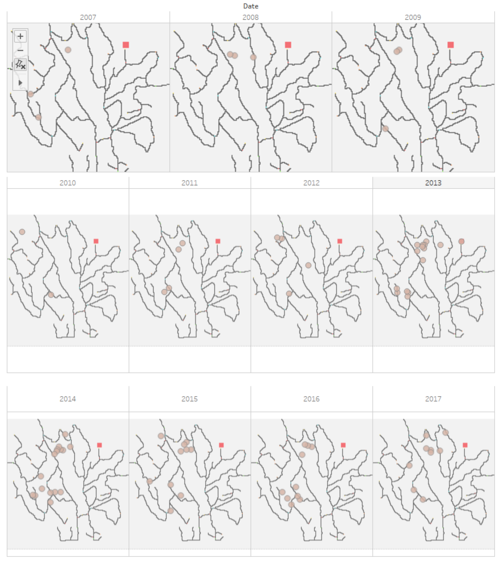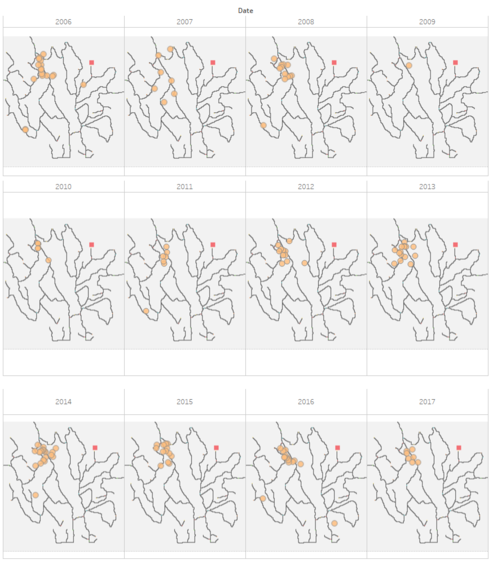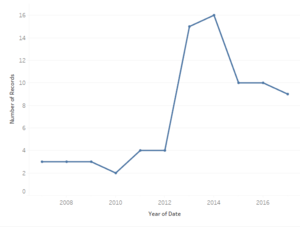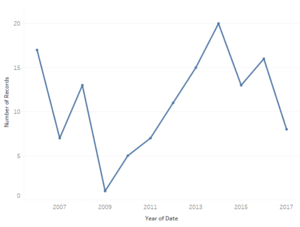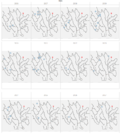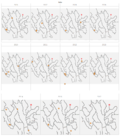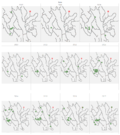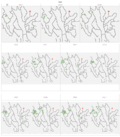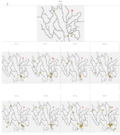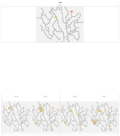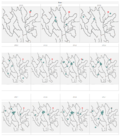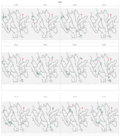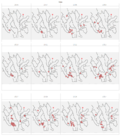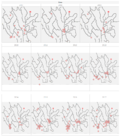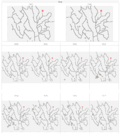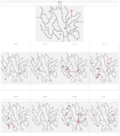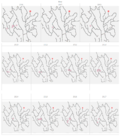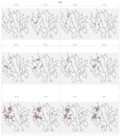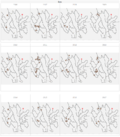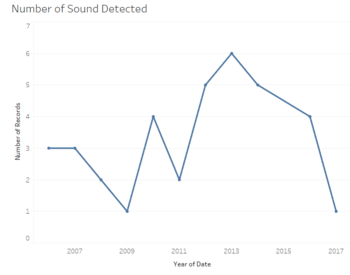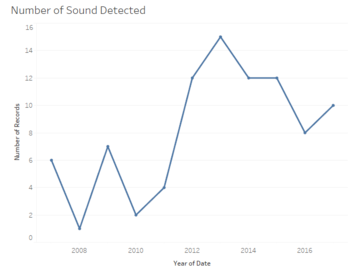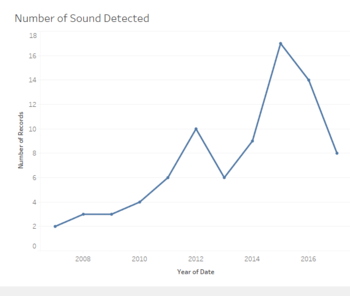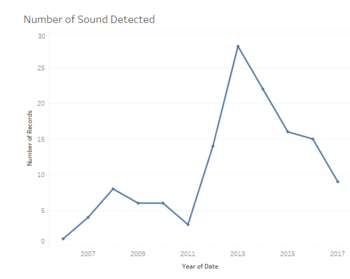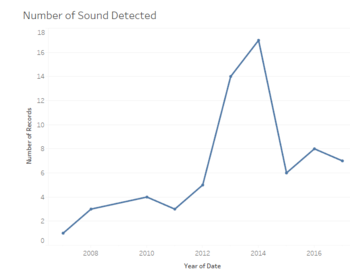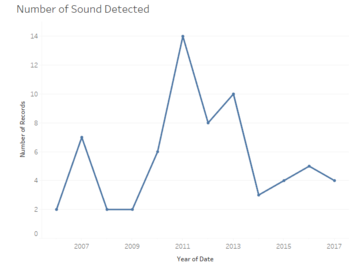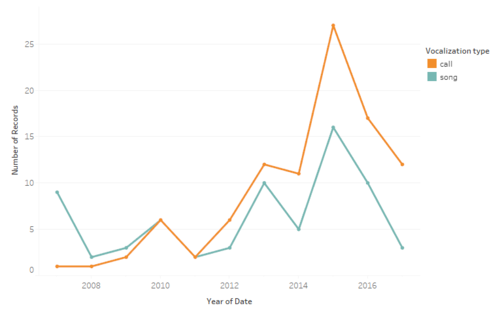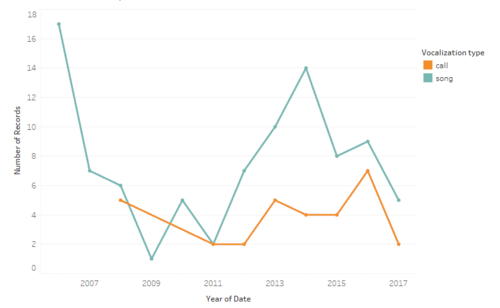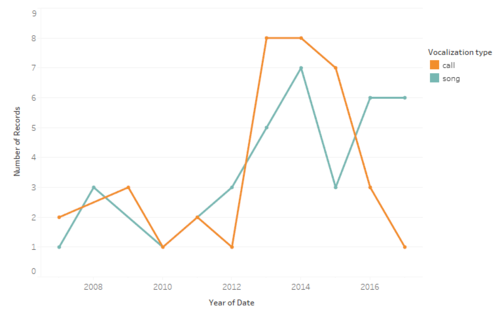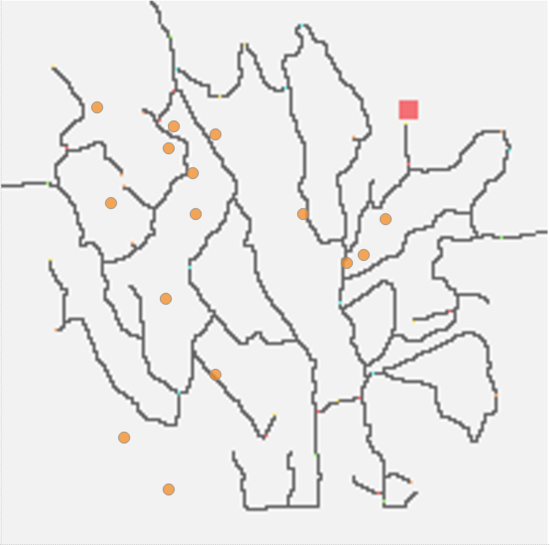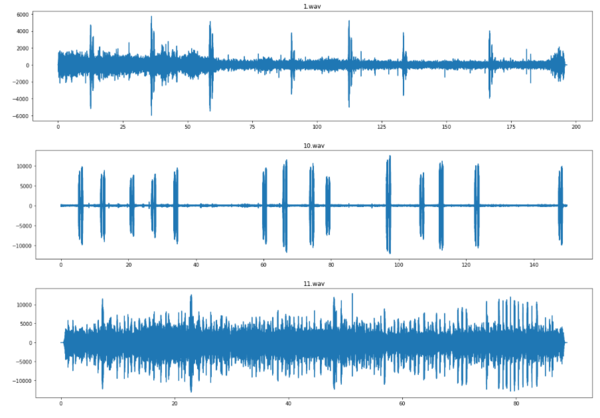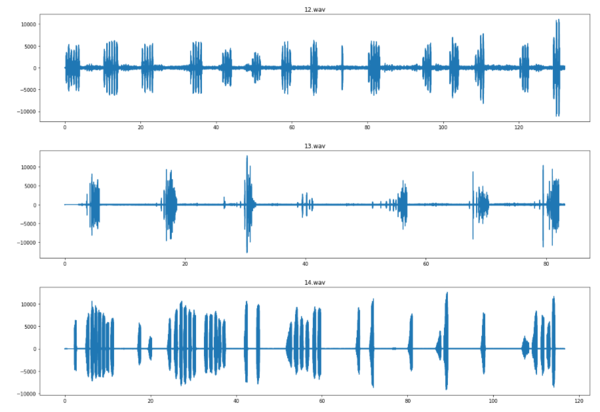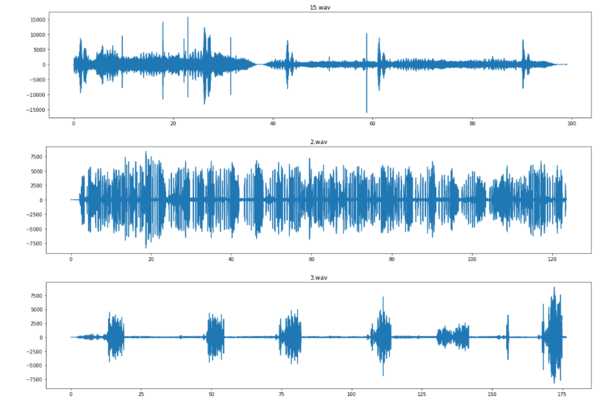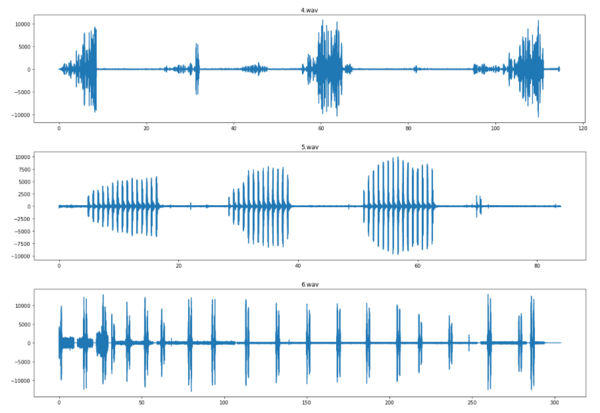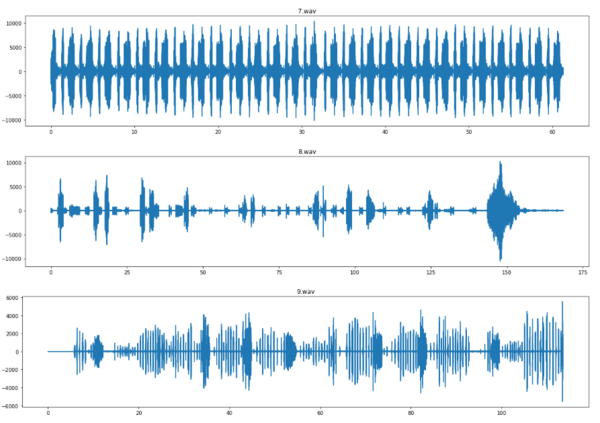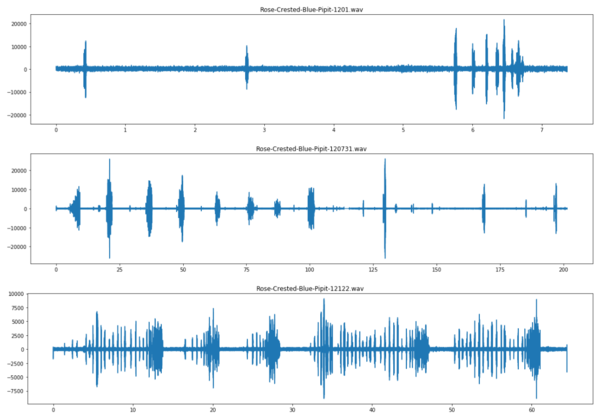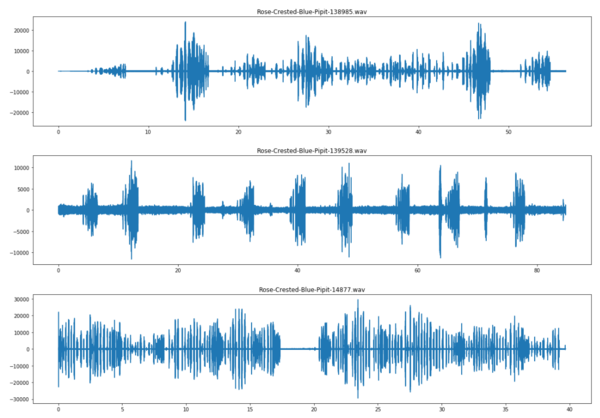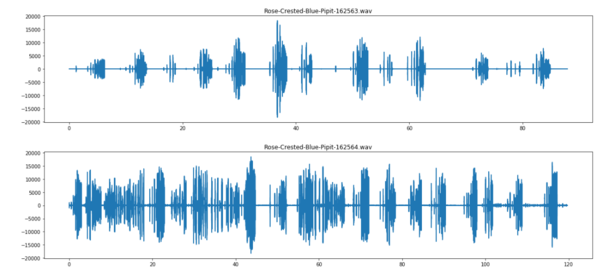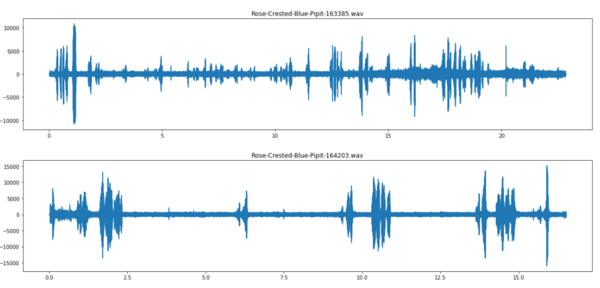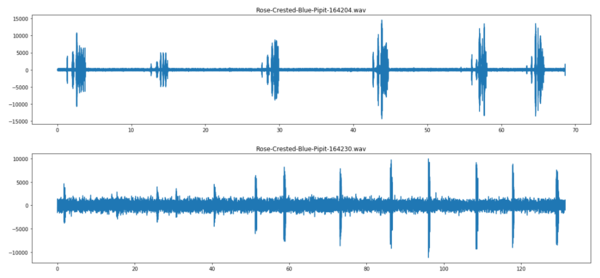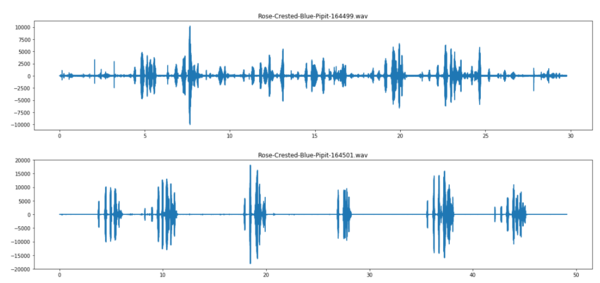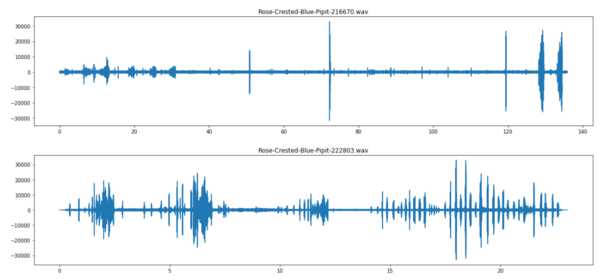Difference between revisions of "ISSS608 2017-18 T3 Assign Anthony Theodore Findings"
(add stuff) |
|||
| (2 intermediate revisions by the same user not shown) | |||
| Line 72: | Line 72: | ||
<h3>Map gallery of other species inside Lekagul Preserve</h3> | <h3>Map gallery of other species inside Lekagul Preserve</h3> | ||
Below is the gallery image of all other birds (other than control group) position year by year. Notice that some of the year inside that bird is missing. <br>This is due to that in that particular year, there are no bird sound detected for that species. This can mean either the species cluster somewhere where the sensor did not pick up their sound, or there are sudden situation that made the bird disappear entirely in that particular year. Unfortunately, we don't have enough data to cover this blank year.<br> <b>Click on the image to view the map closely.</b> | Below is the gallery image of all other birds (other than control group) position year by year. Notice that some of the year inside that bird is missing. <br>This is due to that in that particular year, there are no bird sound detected for that species. This can mean either the species cluster somewhere where the sensor did not pick up their sound, or there are sudden situation that made the bird disappear entirely in that particular year. Unfortunately, we don't have enough data to cover this blank year.<br> <b>Click on the image to view the map closely.</b> | ||
| − | <gallery mode=" | + | <gallery mode="nolines" heights="300"> |
File:Bbr atheodore.PNG|Bent-beak Riffraff | File:Bbr atheodore.PNG|Bent-beak Riffraff | ||
File:Bluecollared zipper atheodore.PNG|Blue-collared Zipper | File:Bluecollared zipper atheodore.PNG|Blue-collared Zipper | ||
| Line 90: | Line 90: | ||
</gallery> | </gallery> | ||
<br> | <br> | ||
| − | Link for the dashboard: | + | <b>Link for the dashboard:</b> https://public.tableau.com/profile/anthony.theodore#!/vizhome/BirdsDistributionDashboard/FinalDashboard?publish=yes |
<br><br> | <br><br> | ||
<h3>Bird species that shared the same fate as Rose-crested Blue Pipit</h3> | <h3>Bird species that shared the same fate as Rose-crested Blue Pipit</h3> | ||
| Line 173: | Line 173: | ||
<h3>Comparing the sound with Rose-crested Blue Pipit</h3> | <h3>Comparing the sound with Rose-crested Blue Pipit</h3> | ||
Next, we plot the oscillogram of a sample of 15 Rose-crested Blue Pipit sound. | Next, we plot the oscillogram of a sample of 15 Rose-crested Blue Pipit sound. | ||
| + | <div><ul> | ||
| + | <li style="display: inline-block;"> [[File:Pipitsound1 atheodore.PNG|600px]] </li> | ||
| + | <li style="display: inline-block;"> [[File:Pipitsound2 atheodore.PNG|600px]] </li> | ||
| + | </ul></div> | ||
| + | <div><ul> | ||
| + | <li style="display: inline-block;"> [[File:Pipitsound3.PNG|600px]] </li> | ||
| + | <li style="display: inline-block;"> [[File:Pipitsound4 atheodore.PNG|600px]] </li> | ||
| + | </ul></div> | ||
| + | <div><ul> | ||
| + | <li style="display: inline-block;"> [[File:Pipitsound5 atheodore.PNG|600px]] </li> | ||
| + | <li style="display: inline-block;"> [[File:Pipitsound6 atheodore.PNG|600px]] </li> | ||
| + | </ul></div> | ||
| + | <div><ul> | ||
| + | <li style="display: inline-block;"> [[File:Pipitsound8 atheodore.PNG|600px]] </li> | ||
| + | </ul></div> | ||
| + | Notice that all of the Rose-crested Blue Pipit has distinct sound pattern, which they tend to get repeated in a medium interval, and each interval consist of rapid sound. By comparing these Oscillogram, we can see which one is clearly different than the Rose-crested Blue Pipit.<br> | ||
| + | Sound that we are able to detect very similar to Rose-crested Blue Pipit:<br> | ||
| + | '''Sound 2'''[[File:2wav atheodore.PNG|800px]] | ||
| − | + | '''Sound 9'''[[File:9wav atheodore.PNG|800px]] | |
| + | |||
| + | '''Sound 13'''[[File:11wav atheodore.PNG|800px]] | ||
<h3>Final touch - Comparison of coorplot of Rose-crested Blue Pipit with Kasios test bird</h3> | <h3>Final touch - Comparison of coorplot of Rose-crested Blue Pipit with Kasios test bird</h3> | ||
| − | < | + | For further proof that these 15 files is not representable to 186 file from Rose-crested Blue Pipit, we created and compare a correlation plot from the .WAV information extracted using R. Sure enough, the correlation plot is significantly different, which is supposed to be not happening if the 15 files are indeed representative of the 186 files. <br> |
| + | <div><ul> | ||
| + | <li style="display: inline-block;"> [[File:Correlation-pipit atheodore.PNG|895px|thumb|none|Correlation Matrix for Rose-crested Blue Pipit]] </li> | ||
| + | <li style="display: inline-block;"> [[File:Correlation-kasios atheodore.PNG|900px|thumb|none|Correlation Matrix for 15 test bird by Kasios]] </li> | ||
| + | </ul></div> | ||
| + | Thus we can safely say that Kasios in fact, did not give us the data for Rose-crested Blue Pipit sound and these 15 sounds should not be representative of Rose-crested Blue Pipit.<br> | ||
Latest revision as of 22:45, 8 July 2018
|
|
|
|
|
|
Contents
- 1 Initial Exploration
- 2 Situation inside Lekagul Preserve
- 3 Audio Visualization - Confirming Kasios Claim
Initial Exploration
Below is the distribution of all bird inside Lekagul Preserve that are detected by sensors. While there are many different bird inside Lekagul Preserve, only Rose-crested Blue Pipit is seen grouping in the alleged dumping site area. Note that there are 2 cluster visible in the map, which are directly above the alleged dumping site, and to the south of said dumping site.
Thus looking at this behavior, it made sense that the Kasios was blamed with the disappearance of Rose-crested Blue Pipit. Of all bird that live inside Lekagul Preserve, Rose-crested Blue Pipit is the bird that will greatly be affected by the dumping situation.
However, not only Rose-crested Blue Pipit, but other bird, such as Ordinary Snape is also seen grouping near the dumping site.
Bombadill and Vermillion Trillian is also spotted grouping near the dumping site, albeit further than Ordinary Snape and Rose-crested Blue Pipit.
We will use all this birds as our control group because if indeed the dumping site was the cause of Rose-crested Blue Pipit disappearance, then these birds should also be affected. As mention in the description, the extent of the area affected by the dumping site is unknown. In our approach, we mention that we only use the data from 2006 - 2017. The reason for this decision was, even though the assignment description stated that the patterns are reasonably representative of the bird locations across the area, all birds did not have significant record until 2006, as seen from the graph. We excluded 2018 because the data recorded for 2018 are until Q1, and has insufficient data for the rest of 2018.
Situation inside Lekagul Preserve
Disappearance of many birds
Initially, the population of Rose-crested Blue Pipit were increasing. They peaked at 2015, but then gradually decreased until 2017. This may indicate that there is indeed something happened with the Rose-crested Blue Pipit, and by visualizing year by year cluster of the bird, we can see that the bird actually moved away in 2015, as seen below:
The cause of this migration is unknown, but we could assume that it has something to do with the alleged waste dumping taking place, since Rose-crested Blue Pipit is the only bird that cluster in the alleged dumping area, and no other bird display such drastic migration.
For comparison, we will show our control group situation. Ordinary Snape is a bird grouping nearest to the dumping site. If we see at the year by year position, it is very clear that they never migrate outside their cluster, unlike Rose-crested Blue Pipit. However, their population is also decreasing, albeit not as much as Rose-crested Blue Pipit.
The same case also happening with Bombadil and Vermillion Trillian. However, Vermillion Trillian only decreased a little bit, and start to stabilized at 2015 while Bombadil start thriving from 2009 and peaked at 2014, then start to disappear similar to Rose-crested Blue Pipit.
Map gallery of other species inside Lekagul Preserve
Below is the gallery image of all other birds (other than control group) position year by year. Notice that some of the year inside that bird is missing.
This is due to that in that particular year, there are no bird sound detected for that species. This can mean either the species cluster somewhere where the sensor did not pick up their sound, or there are sudden situation that made the bird disappear entirely in that particular year. Unfortunately, we don't have enough data to cover this blank year.
Click on the image to view the map closely.
Link for the dashboard: https://public.tableau.com/profile/anthony.theodore#!/vizhome/BirdsDistributionDashboard/FinalDashboard?publish=yes
As we look through the number of sound detected for each bird, we notice some anomaly detected. Not only Rose-crested Blue Pipit and our control group suffer from the same disappearance, many of other birds away from the dumping site also have decreased sound detected. As the description mention the accurateness of the sensor, we can safely assume that it is reasonably representative of the bird location and their population are indeed decreasing.
If indeed it was caused by the dumping took place, then birds far away from the dumping site should not be affected by it. This call for concern as there are probably other dire situation that affected the bird population inside Lekagul Preserve.
The following is the list of bird that similarly showed decrease throughout the year:
Blue-collared Zipper
Broad-winged Jojo
Canadian Cootamum
Lesser Birchbeere
Pinkfinch
Scrawny Jay
Change of birds behaviour
By plotting sound and call in one chart, we can see that in 2015, as the population of Rose-crested Blue Pipit started to decrease, the number of call also increased to almost double than the number of song detected. This finding match the earlier finding we acquired, that in 2015 Rose-crested Blue Pipit migrate away from their initial cluster (the dumping site).
The reason why we want to closely look for the vocalization type, referencing on http://www.avianwelfare.org/shelters/pdf/NBD_shelters_minimize_stress.pdf, is that call can seldom be interpreted as sign of distress from birds, and one of the sign that should be look for. Since it is match with our finding earlier, this can indicate that the Rose-crested Blue Pipit population may indeed in stressed condition.
As for our control group, Ordinary Snape has the same anomaly in behavior as Rose-crested Blue Pipit.
Bombadil and Vermillion Trillian both are not greatly affected by the dumping site, and retain their chirpy behavior throughout the year, although some call still detected.
image for BM and VT sound call
Interesting finding for Vermillion Trillian, even though there are spike on the amount of call detected in 2013-2014, they eventually decrease.
This match the finding earlier that the population of Vermillion Trillian stabilize in 2015 after decreasing.
Key Observations
Some key observation in our finding:
- Rose-crested Blue Pipit population showing growth from 2007, peaked at 2015, then gradually decreasing until 2017.
- Rose-crested Blue Pipit may be the only species that directly affected by the dumping site. This is backed by the map showing they move their cluster away from the dumping site (their initial cluster).
- In 2015, Rose-crested Blue Pipit species singing gradually decreased as their sound turned to call. This is possibly due to stressed condition.
- From our control group, Ordinary Snape and Bombadil, share the same fate as the Rose-crested Blue Pipit, showing sign of struggling albeit did not migrate away.
- Only Vermillion Trillian species seem adapted to the situation and stabilized.
- A lot of other bird species that cluster far from the dumping site seems to suffer the same fate, showing sign of disappearance throughout the year. This raised multiple possible hypothesis.
- That the dumping site extent is that much bigger than initially thought. This is unlikely to be true as unless the waste product is gas based, then it would not be possible to have such large influence inside a park.
- That the dumping site is the not only dire situation inside Lekagul Preserve. There are other dire situation that are not reported that caused other bird species to disappear, such as other dumping site area that are not reported.
- That the dumping event does not exist, and the bird disappear simply because of natural event. This is also unlikely to be true as there are proof that Rose-crested Blue Pipit did indeed moved away from the alleged dumping site.
Based on this observation, we can assume that if indeed the dumping site has a high probability to be the cause for the disappearance of Rose-crested Blue Pipit since it is shown that Rose-crested Blue Pipit moved away from the dumping site and began disappear. However, it did not explain why other bird far away from the dumping site also disappearing, particularly in west part of the preserve.
Audio Visualization - Confirming Kasios Claim
Location of the tested sound by Kasios
Initial exploration in tableau reveal that the location of the sound sent by Kasios is not near the cluster of Rose-crested Blue Pipit. Instead, it is located at the western part of the Lekagul Preserve.
If the sensor is accurate enough to be the actual representative of the distribution of the Rose-crested Blue Pipit, then almost all bird sent by Kasios is not actually Rose-crested Blue Pipit.
Even then, we cannot actually determined whether the species of the bird that close to the Rose-crested Blue Pipit cluster since it can also be an Ordinary Snape species.
Since Kasios did not send any information regarding the species, we cannot claim that these bird is not representative of Rose-crested Blue Pipit yet.
We can resort to using Oscillogram to plot the sound wave and detect the characteristic of these bird.
Oscillogram plot of Kasios test bird
First, we plot the oscillogram of all 15 Kasios test bird using Python package wave:
Comparing the sound with Rose-crested Blue Pipit
Next, we plot the oscillogram of a sample of 15 Rose-crested Blue Pipit sound.
Notice that all of the Rose-crested Blue Pipit has distinct sound pattern, which they tend to get repeated in a medium interval, and each interval consist of rapid sound. By comparing these Oscillogram, we can see which one is clearly different than the Rose-crested Blue Pipit.
Sound that we are able to detect very similar to Rose-crested Blue Pipit:
Sound 2
Final touch - Comparison of coorplot of Rose-crested Blue Pipit with Kasios test bird
For further proof that these 15 files is not representable to 186 file from Rose-crested Blue Pipit, we created and compare a correlation plot from the .WAV information extracted using R. Sure enough, the correlation plot is significantly different, which is supposed to be not happening if the 15 files are indeed representative of the 186 files.
Thus we can safely say that Kasios in fact, did not give us the data for Rose-crested Blue Pipit sound and these 15 sounds should not be representative of Rose-crested Blue Pipit.
